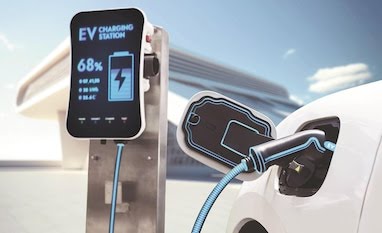New Delhi, September 12, 2024 – In a significant stride towards promoting sustainable mobility in India, Prime Minister Narendra Modi has unveiled the PM E-DRIVE (Electric Drive Revolution in Innovative Vehicle Enhancement) Scheme. This initiative, backed by an outlay of Rs 10,900 crore over two years, marks a pivotal moment in the country’s push towards electric vehicle (EV) adoption, aiming to transform the transportation landscape.
The PM E-DRIVE Scheme replaces the earlier FAME (Faster Adoption and Manufacturing of (Hybrid &) Electric Vehicles) programme, signaling a new chapter in India’s EV policy framework. The scheme’s primary focus is on enhancing the adoption of electric two-wheelers, three-wheelers, and buses, with an ambitious target to support over 2.79 million electric two-wheelers, 316,000 electric three-wheelers, and 14,028 electric buses.
One of the standout features of this scheme is its emphasis on infrastructure development, with plans to install 88,500 charging stations across the country. This move addresses one of the critical barriers to EV adoption – range anxiety – by ensuring that EV owners have access to charging facilities in urban centers and along highways.
The financial incentives under PM E-DRIVE are designed to make EVs more accessible to the public. Subsidies worth Rs 3,679 crore are set aside for buyers of electric two-wheelers, three-wheelers, e-ambulances, and e-trucks. Additionally, Rs 4,391 crore has been allocated for the procurement of e-buses by state transport undertakings, particularly targeting cities with populations over 40 lakh. This initiative not only aims at reducing pollution but also at improving public transport efficiency.
Innovation in the EV sector is also at the heart of this scheme. With Rs 500 crore each earmarked for e-ambulances and e-trucks, the government is encouraging the development and adoption of specialized electric vehicles that cater to specific needs like emergency medical services and heavy-duty transport.
The introduction of e-vouchers is another innovative step, simplifying the purchase process for consumers by providing a transparent and direct subsidy mechanism. This digital tool is expected to streamline the EV buying experience, making it more user-friendly and less bureaucratic.
Prime Minister Modi, in his statement following the cabinet approval, highlighted the scheme’s role in building a sustainable future, “The PM E-DRIVE Scheme will not only boost green mobility but also contribute significantly to reducing our carbon footprint, promoting indigenous manufacturing, and creating job opportunities in the EV sector.”
Industry reactions have been overwhelmingly positive, with experts and stakeholders seeing this as a robust push towards making India a global hub for electric vehicle manufacturing and usage. The scheme’s focus on domestic value addition and the integration of local resources into manufacturing processes aligns with the ‘Make in India’ initiative, potentially attracting more global players like Tesla, which has been eyeing the Indian market.
As India moves forward with PM E-DRIVE, the scheme’s success will largely depend on its implementation, the actual rollout of charging infrastructure, and the real-world impact on EV adoption rates. However, with this significant investment and policy framework, the government has set the stage for what could be a transformative era in Indian transportation, aiming for cleaner air, reduced oil imports, and a leap towards sustainable urban mobility.



